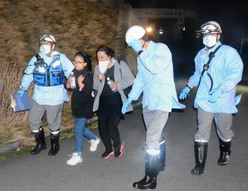OF THE
TIMES
A nation that continues year after year to spend more money on military defense than on programs of social uplift is approaching spiritual doom.
Documents provided to Gript under FOI show that senior officials in the Department of Justice believed that amending Article 41 of the...
I think somehow diversity struck again. Get it?
This man’s lips are moving, he’s a lying degenerate illegitimate tool! And that’s as polite as I can be in describing this vermin.
“Upset about high interest rates, growing paperwork and heavy regulatory burdens“ “the net income of farms dropped by an average of 50 per cent...
Reductio ad absurdum. Risible, farcical & puerile assumptions bring in more Cowbell & Clowns. The ancient Rig Vedic texts already tell us...
To submit an article for publication, see our Submission Guidelines
Reader comments do not necessarily reflect the views of the volunteers, editors, and directors of SOTT.net or the Quantum Future Group.
Some icons on this site were created by: Afterglow, Aha-Soft, AntialiasFactory, artdesigner.lv, Artura, DailyOverview, Everaldo, GraphicsFuel, IconFactory, Iconka, IconShock, Icons-Land, i-love-icons, KDE-look.org, Klukeart, mugenb16, Map Icons Collection, PetshopBoxStudio, VisualPharm, wbeiruti, WebIconset
Powered by PikaJS 🐁 and In·Site
Original content © 2002-2024 by Sott.net/Signs of the Times. See: FAIR USE NOTICE

Comment: As well as other recent 'underground' fires, such as in central London and hundreds of manhole explosions in New York; there have been other incidents of "burning electrical or smoke" and smoke filled cockpits 'up in the air' too. What is going on? Could it be part of the 'grounding' of our Solar System?
See: SOTT Exclusive: Solar System 'grounding':Transformer explosions and electrical anomalies